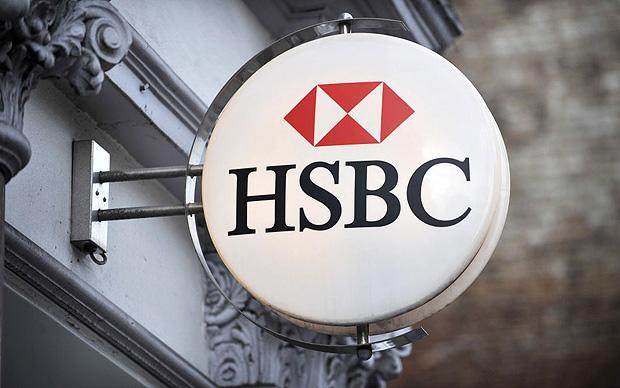Consortium proves Letter of Credit transactions can be executed on Blockchain
Digital innovation heralds trade efficiency benefits for banks and companies
August 23, 2016: Bank of America Merrill Lynch, HSBC and the Infocomm Development Authority of Singapore (IDA) announced on 10 August 2016 that they have jointly developed a prototype solution built on Blockchain technology that could change the way businesses around the world trade with each other. The consortium utilized the Linux Foundation open source Hyperledger Project blockchain fabric which development was supported by IBM Research and IBM Global Business Services.
The application mirrors a paper-intensive Letter of Credit (LC) transaction by sharing information between exporters, importers and their respective banks on a private distributed ledger. This then enables them to execute a trade deal automatically through a series of digital smart contracts.
The proof of concept shows potential to streamline the manual processing of import/export documentation, improve security by reducing errors, increase convenience for all parties through mobile interaction and make companies’ working capital more predictable. The consortium now plans to conduct further testing on the concept’s commercial application with selected partners such as corporates and shippers.
Ather Williams, head of Global Transaction Services, Bank of America Merrill Lynch, said: “We are continuously looking for ways to simplify and improve transaction processing for our clients. Blockchain has reshaped our thinking on how to make transaction processes more efficient and transparent for all parties. The success of this proof of concept is a significant development towards digitizing trade transactions, potentially resulting in considerable benefits to the supply chain process.”
“Many people are talking about the theory of Blockchain, but for the first time we can start to see how this technology might be used to solve the real world challenges our customers face,” said Vivek Ramachandran, Global Head of Product for HSBC’s trade finance business. “It’s really exciting to have a valid proof of concept. Letters of Credit are an important part of the trade system, but they are based on 20th century technology, not 21st. Our challenge is to take this from concept to commercial use; making it quicker and easier for businesses to connect with new suppliers and customers at home and abroad.”
“A letter of credit or LC conducted on Blockchain enables greater efficiencies and visibility in trade finance processes, benefitting multiple parties across its value chain. With participation of more members, greater impactful benefits will be realised by the trade ecosystem. As part of the Smart Nation journey, partnerships and the adoption of such innovations can help transform the banking and finance sector,” said Khoong Hock Yun, Assistant Chief Executive of IDA Singapore’s Development Group.
Trade finance processes are typically time and labour intensive, involving multiple documents and checks to reduce risk and provide assurance to sellers, buyers and their banks. A Letter of Credit (LC), or Documentary Credit, is essentially a guarantee provided by a bank that a seller will receive payment from a buyer once certain conditions are met; for example once the seller can provide proof that they have shipped the buyer’s goods.
With this concept, each of the four parties involved in an LC transaction – the exporter, importer and both of their banks – can visualise data in real time on a tablet and see the next actions to be performed. Each action in the workflow is captured in a permissioned distributed ledger, giving transparency to authorised participants whilst encrypting confidential data.
How does the concept work?
Step 1: Importer creates an LC application for the Importer Bank to review and stores it on the Blockchain.
Step 2: Importer Bank receives notification to review the LC and can then approve or reject it based on the data provided. Once checked and approved, access is then provided to the Exporter Bank automatically for approval.
Step 3: Exporter Bank approves or rejects the LC. Once approved, the Exporter is able to view the LC requirements and is prompted to view through the application.
Step 4: Exporter completes the shipment, adds invoice and export application data and attaches a photo image of any other required documents. Once validated, these documents are stored on the Blockchain.
Step 5: Exporter Bank approves or rejects the application and documents.
Step 6: Importer Bank reviews the data and images against the LC requirements, marking any discrepancies for review by the Importer. When approved, the LC goes straight to completed status or is sent to the Importer for settlement.
Step 7: If required due to a discrepancy, the Importer can review the export documents and approve or reject them.
About HSBC in Malaysia
HSBC Bank Malaysia Berhad was locally incorporated in 1984 and is a wholly-owned subsidiary of The Hongkong and Shanghai Banking Corporation Limited (a company under the HSBC Group). In 2007, HSBC Bank Malaysia was the first locally incorporated foreign bank to be awarded an Islamic banking subsidiary licence in Malaysia, and HSBC Amanah Malaysia Berhad, a full-fledged Islamic bank wholly owned by HSBC Bank Malaysia, commenced operations in August 2008. HSBC in Malaysia has a network of 68 branches nationwide, of which 26 are HSBC Amanah Malaysia Berhad branches. HSBC Amanah Malaysia Berhad also has offsite ATMs established in 25 locations nationwide. In 2006, HSBC was the first foreign bank to be awarded a Takaful (Islamic insurance) license in Malaysia. HSBC Amanah Takaful (Malaysia) Sdn Bhd, a joint venture between HSBC Insurance (Asia Pacific) Holdings Limited (49% shareholding), Jerneh Asia Berhad (31% shareholding) and Employees Provident Fund Board of Malaysia (20% shareholding) commenced operations in August 2006.
The Hongkong and Shanghai Banking Corporation Limited
The Hongkong and Shanghai Banking Corporation Limited is the founding member of the HSBC Group, which serves around 46 million customers through four global businesses: Retail Banking and Wealth Management, Commercial Banking, Global Banking and Markets, and Global Private Banking. The Group serves customers worldwide from over 4,400 offices in 71 countries and territories in Europe, Asia, North and Latin America, and the Middle East and North Africa. With assets of US$2,608bn at 30 June 2016, HSBC is one of the world’s largest banking and financial services organisations.







